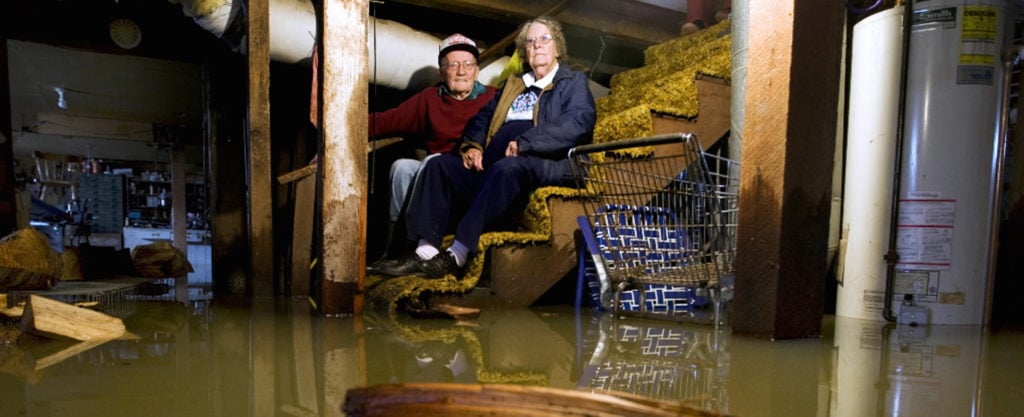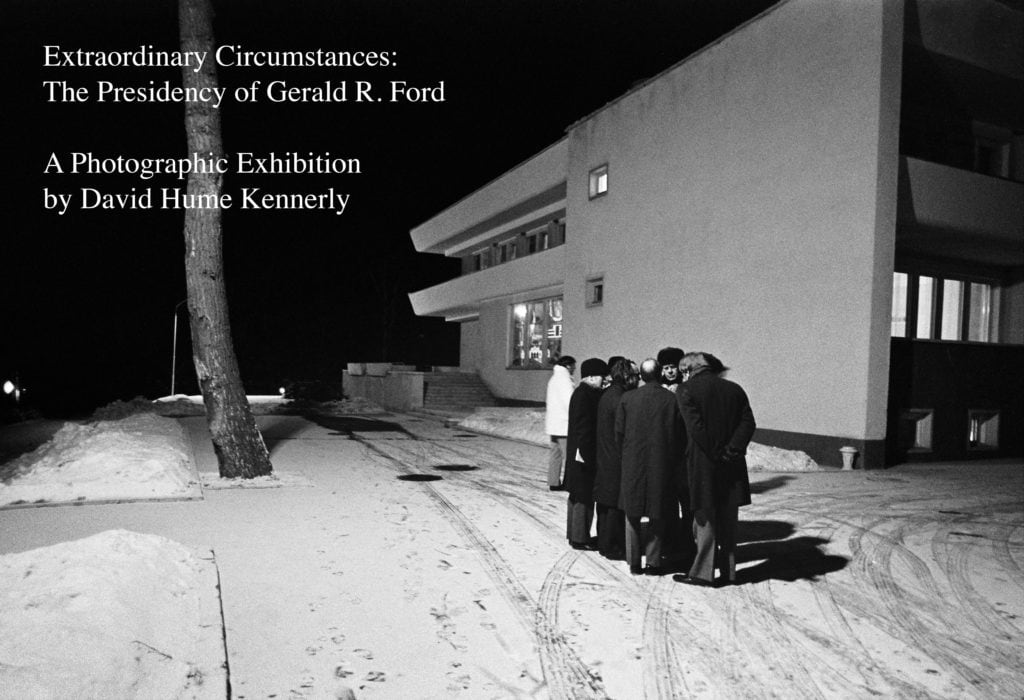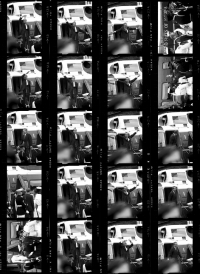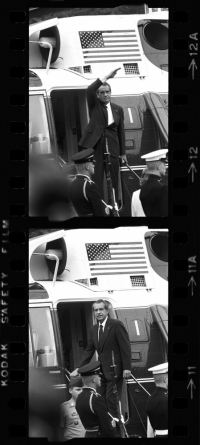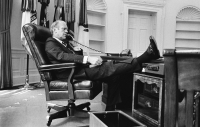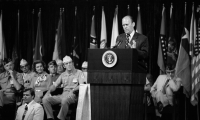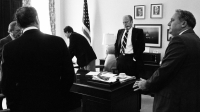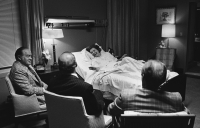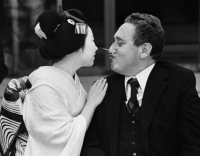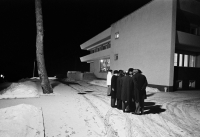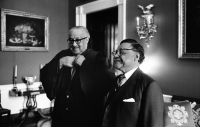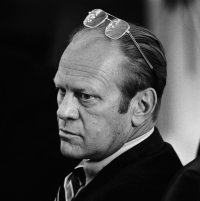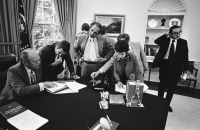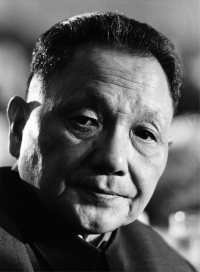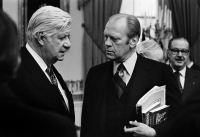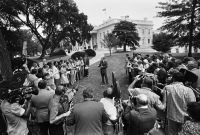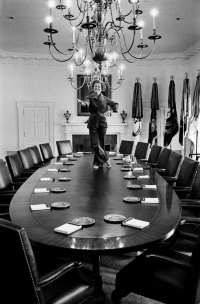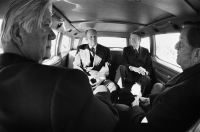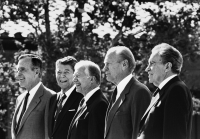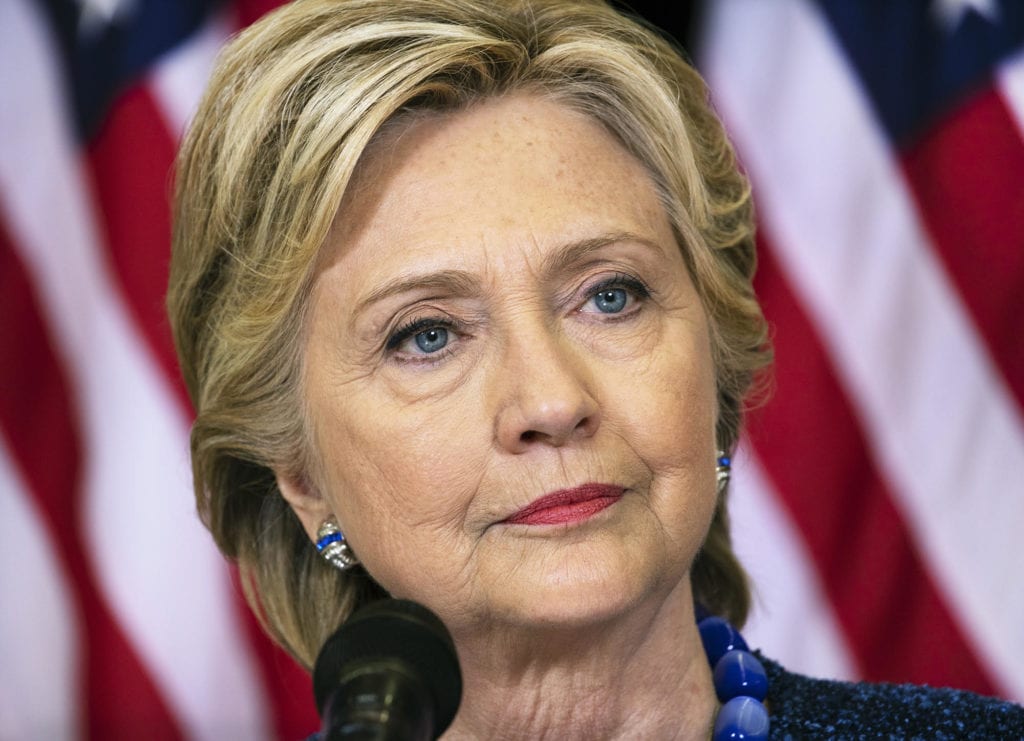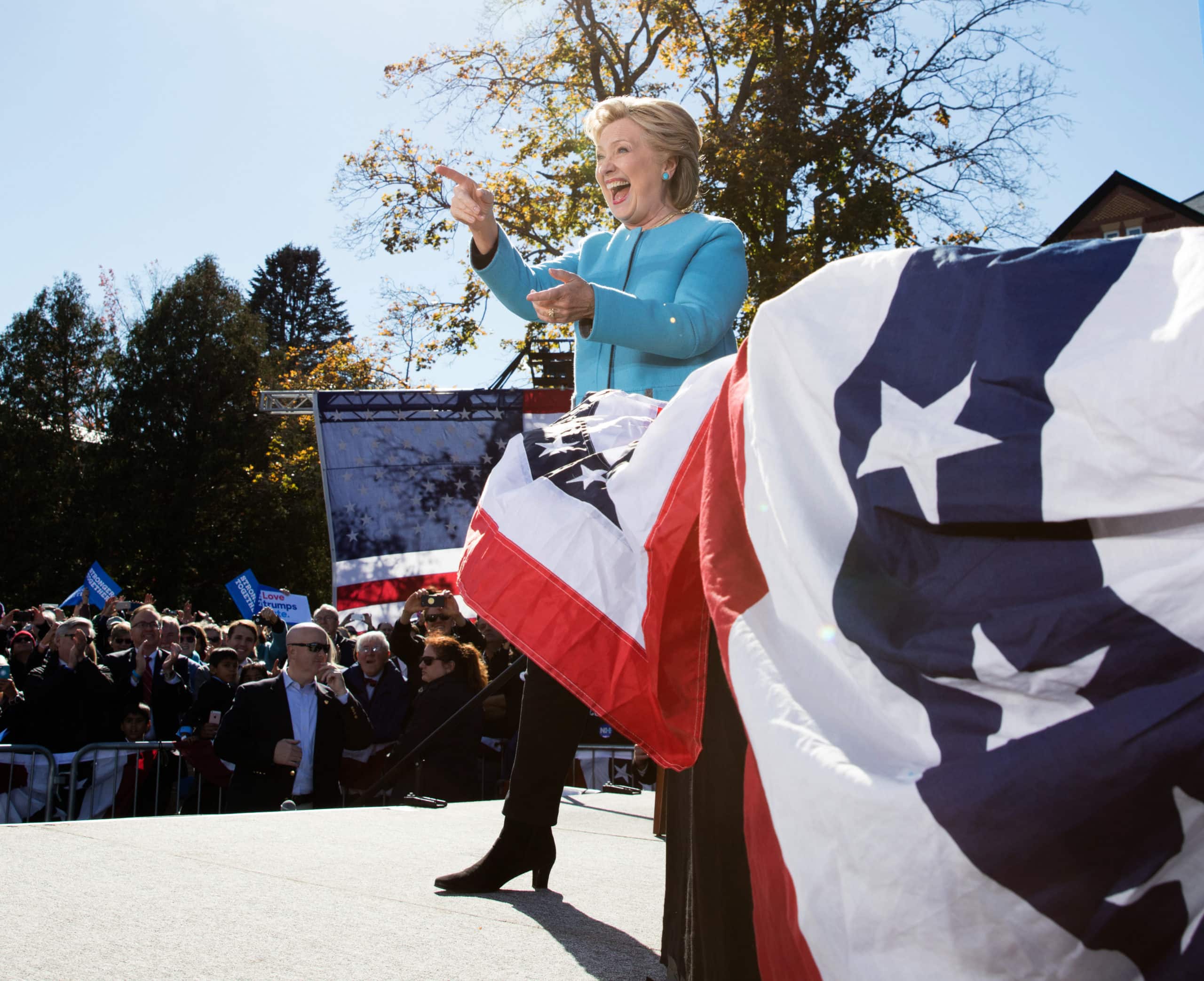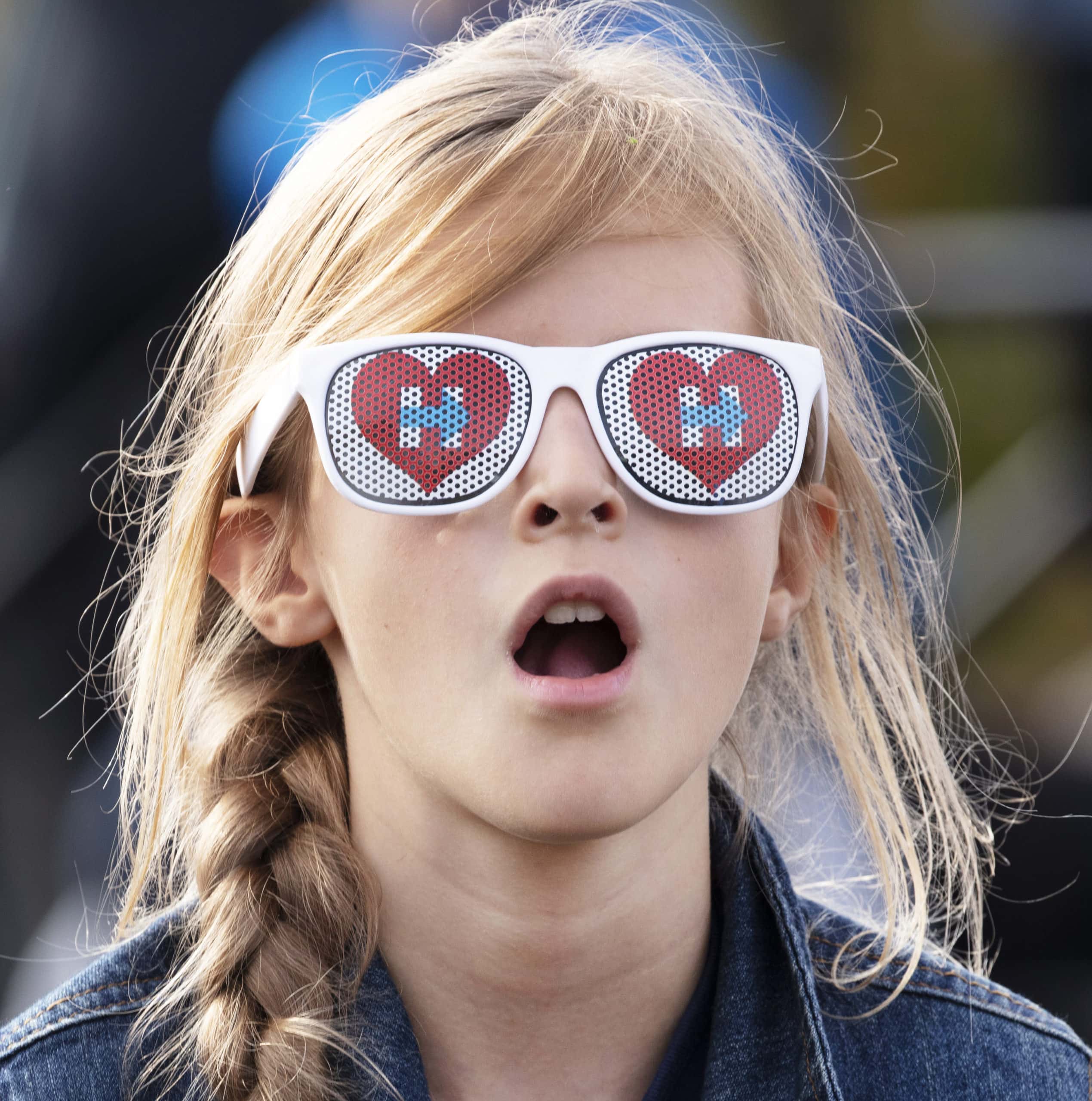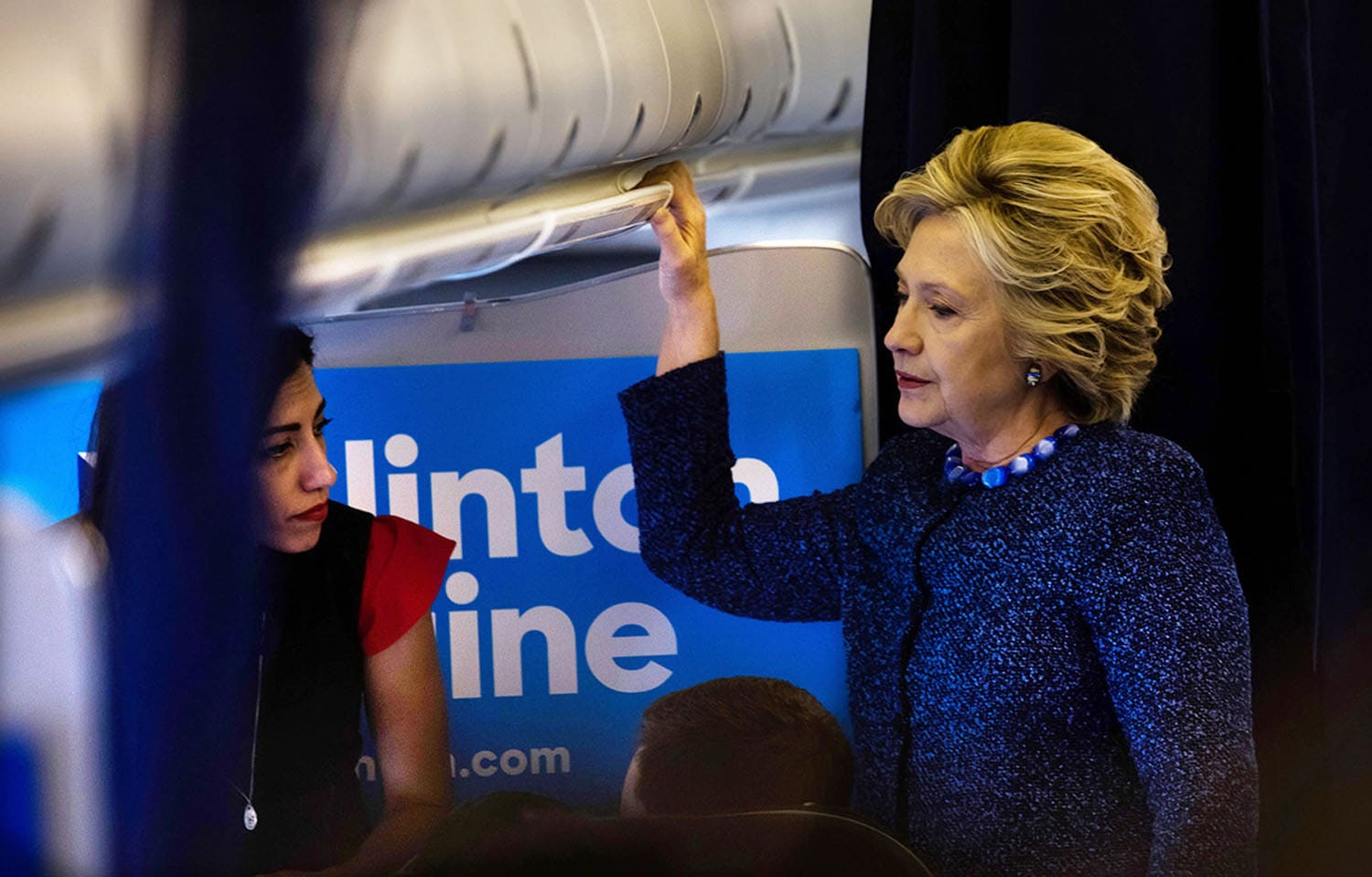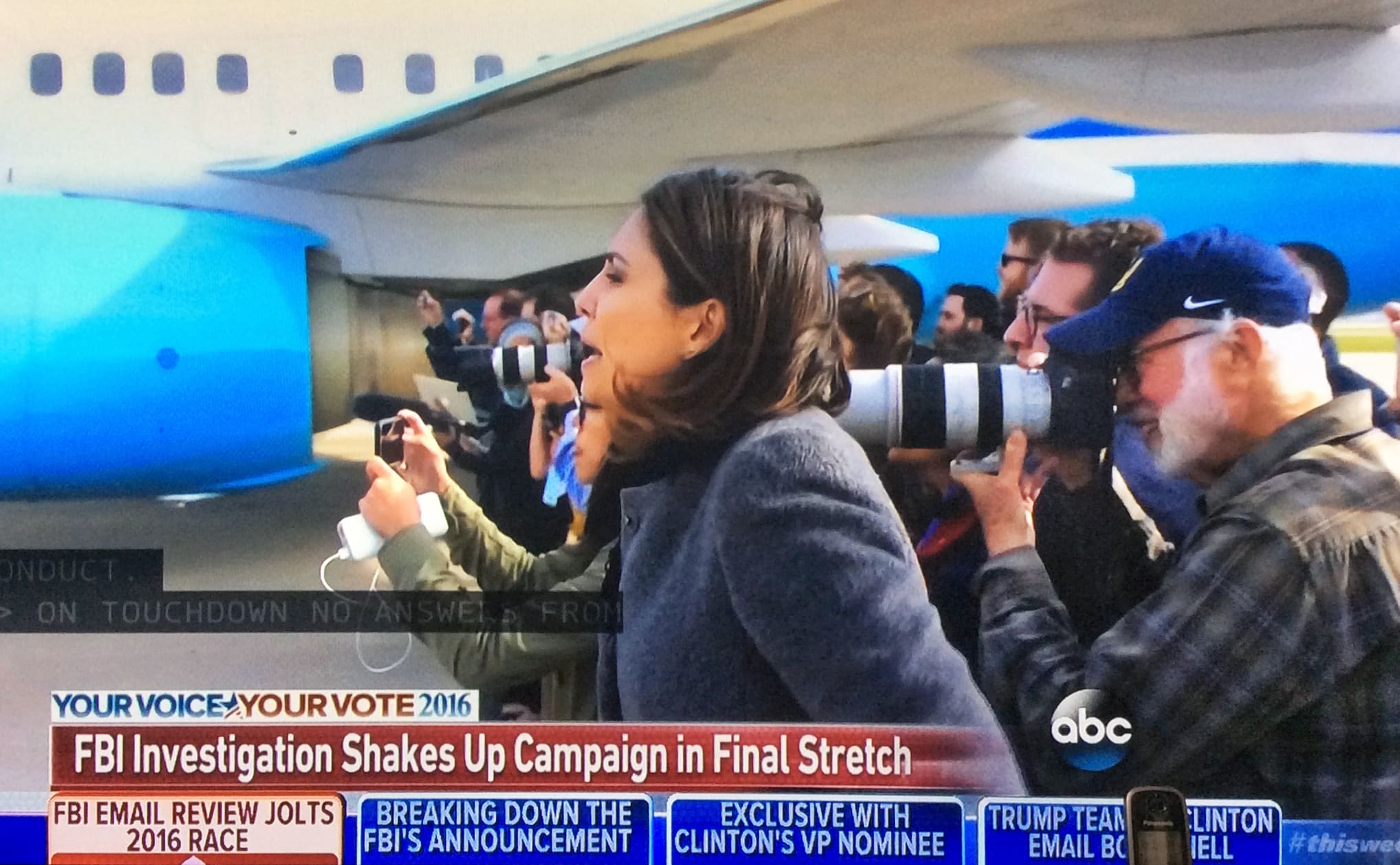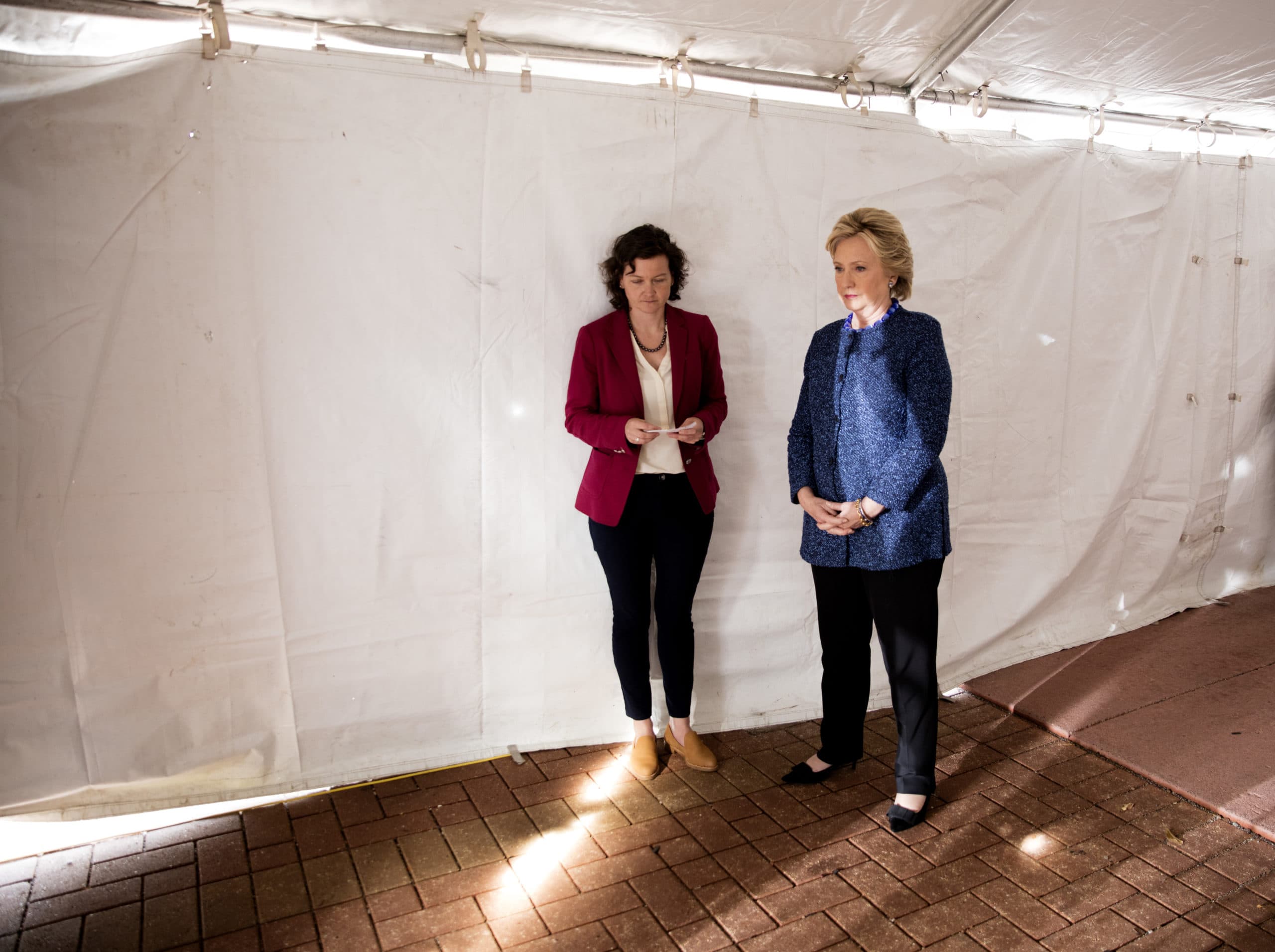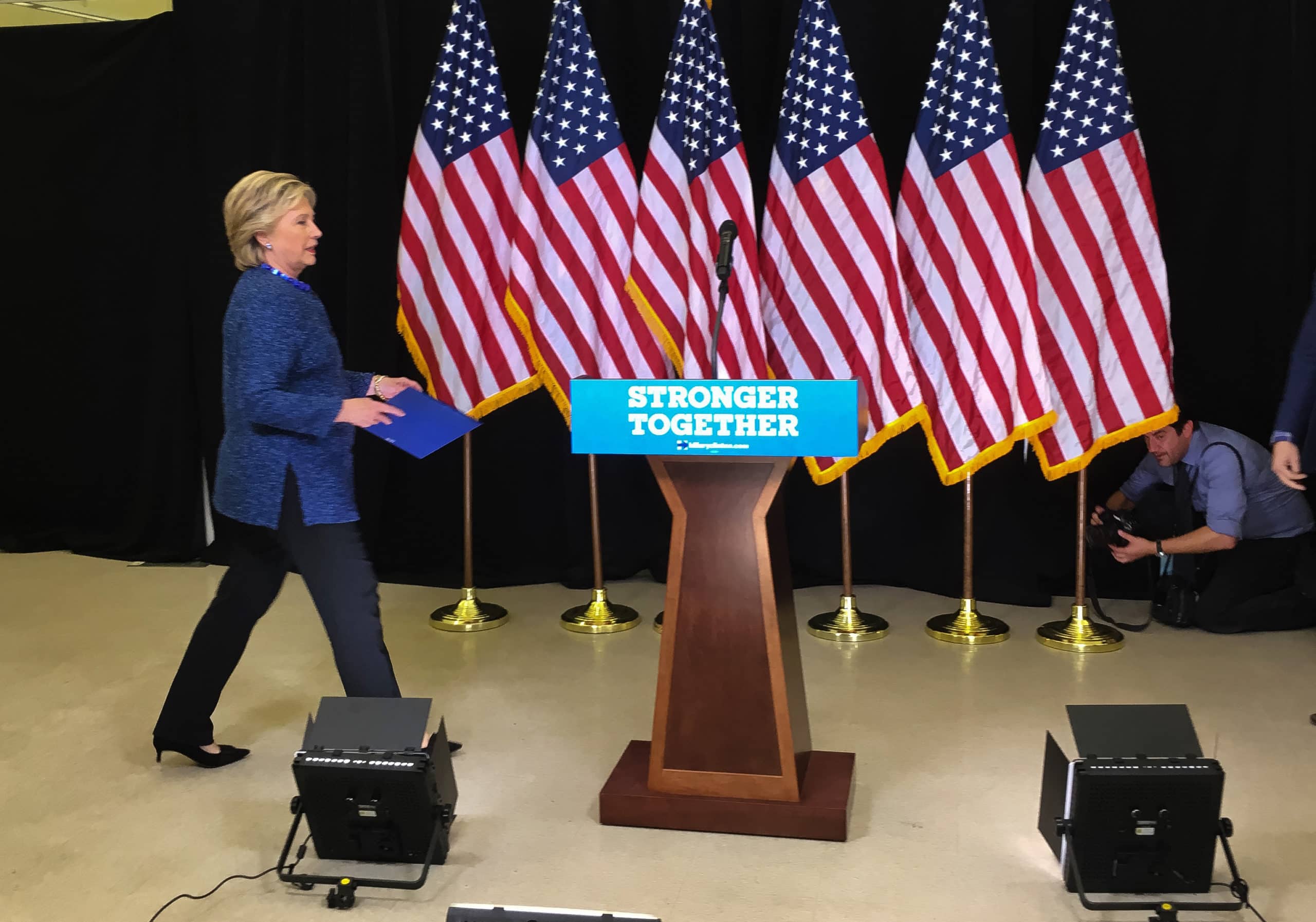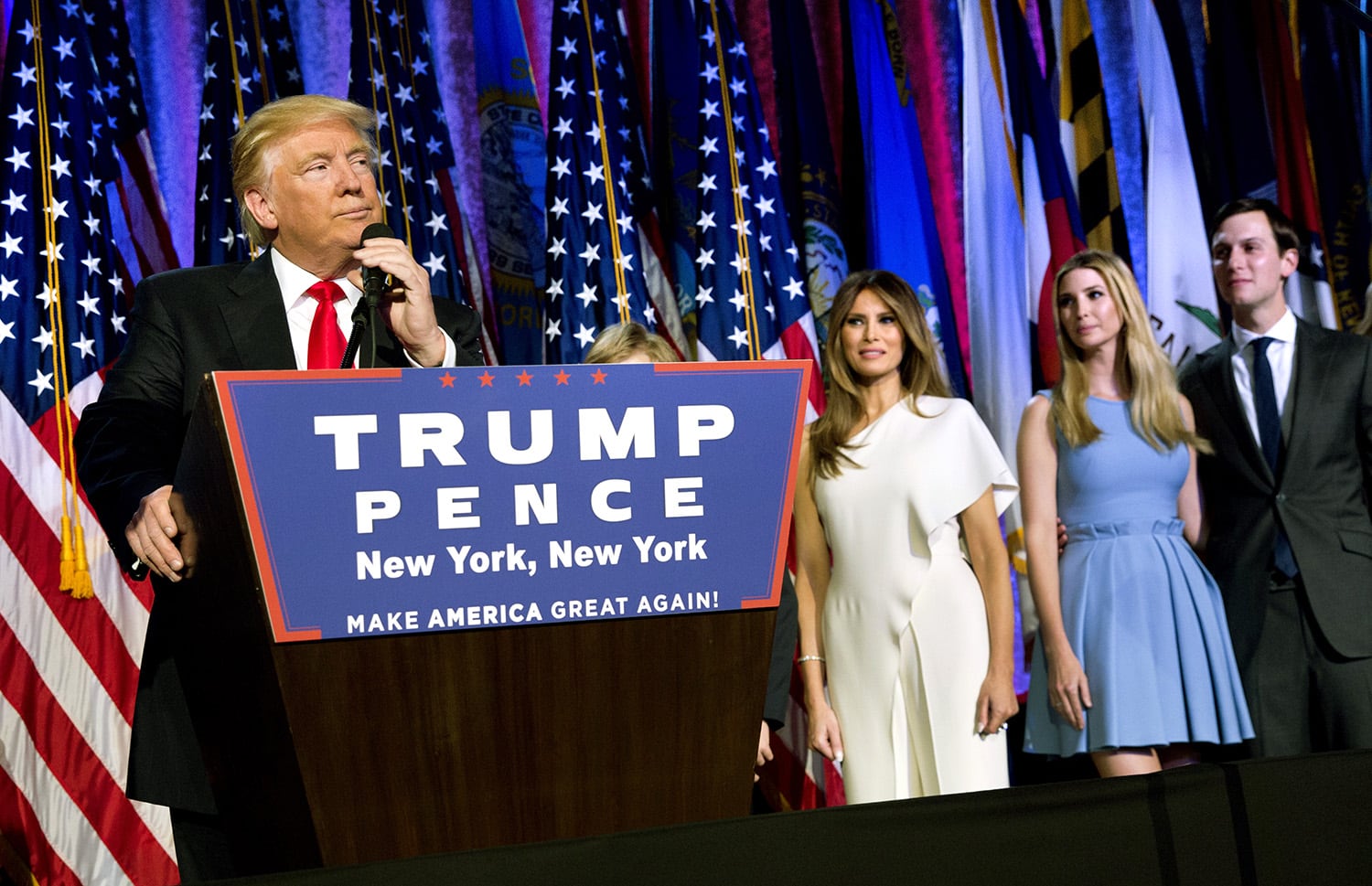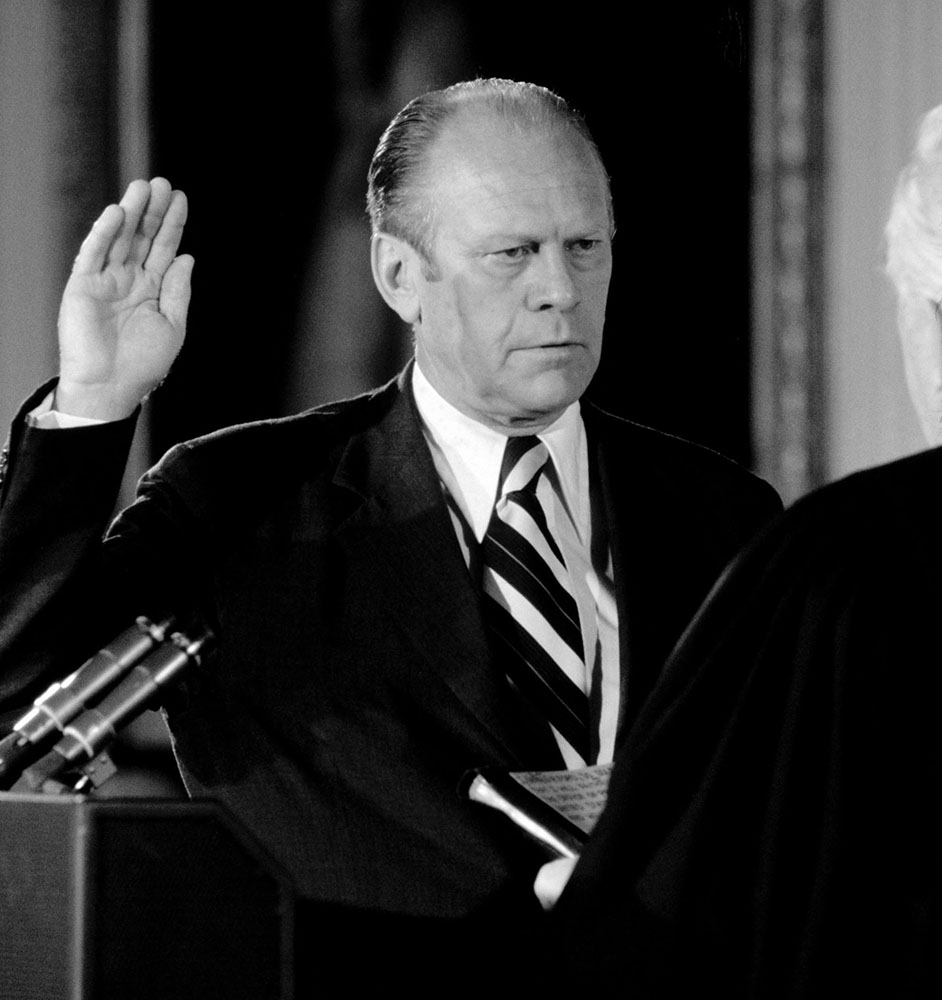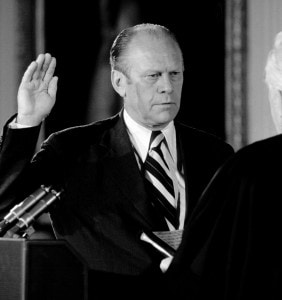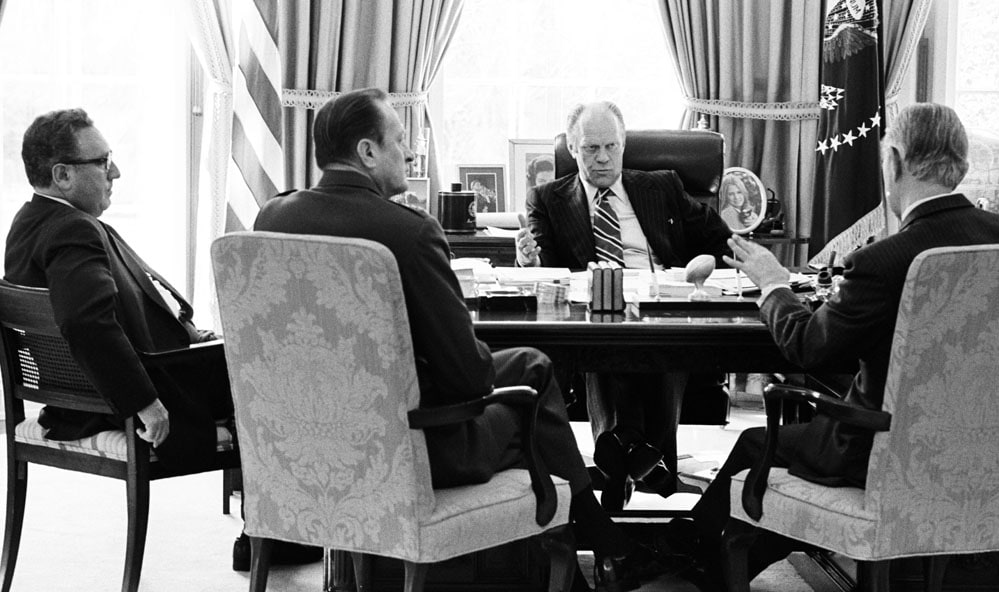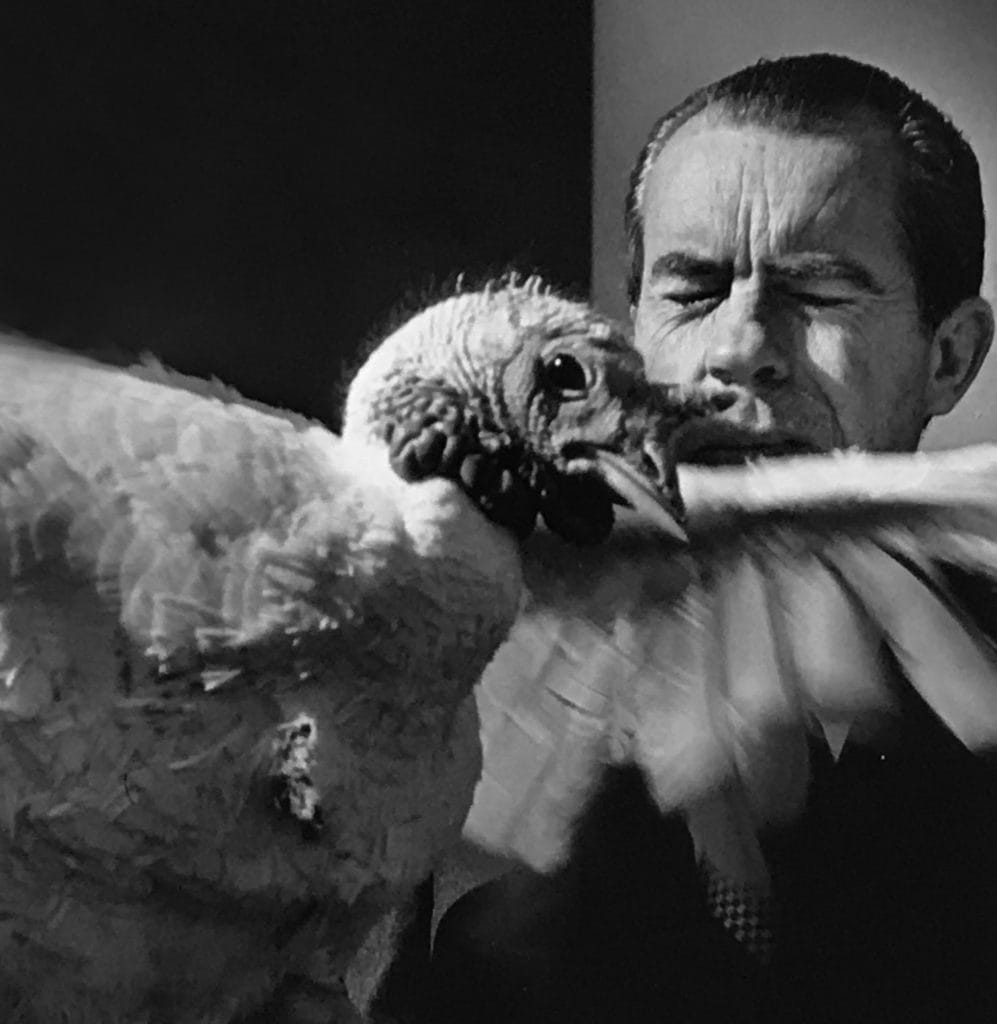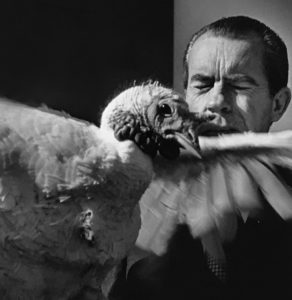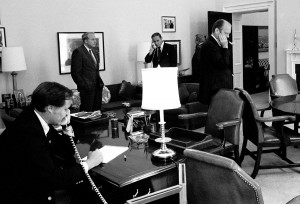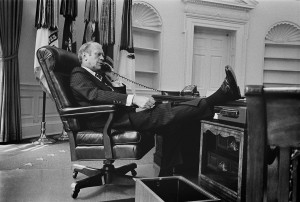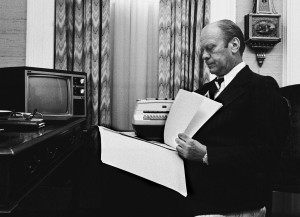(image above is not the Kennerlys, but illustrate the dilemma)
Most photo collections don’t start with a flood; they end that way. And, of course, the David Hume Kennerly collection didn’t actually start with the flood, but my role in it did.
At the time of the flood, David and I had been married for less than two years. I was a busy screenwriter, David was a freelancer and we had a one-year-old son, Nick. On a Saturday morning in late 1995, with David out of town on a project, I was taking our baby son on an outing to a museum. As I backed the car out of our garage, I saw water seeping into the garage from its adjacent store room. I remember pausing for a second, trying to convince myself that the flow could have been normal, but of course, I knew it was not. I stopped the car and checked the storeroom to see that a pipe had broken pouring water over a wall stacked high with boxes. I knew the boxes were David’s, but had no idea what they contained. With our son safely strapped into his car seat, I was able to find the control for that pipe and turn off the water. Then, I got into the car and started to back out again, determined to take the baby to the museum for the day. I tried to convince myself that leaving the boxes in the garage until David returned would be fine. However, once again hit the brakes.
Calling someone on the road wasn't that easy back then. I had to go back into the house to use the land line in hopes that David was near his cell phone which, in those days, were still nearly the size of a brick. Once I contacted him, he confirmed what I had feared. Those soaked boxes were filled with his original negatives, slides and prints.
The baby had been crying for half an hour already while I kept him strapped into his car seat as I struggled with the broken pipe and then called his dad, so I figured he couldn’t be any more upset if made him sit a bit longer. It took me another 30 minutes to move the dozen or so sopping wet boxes into the back of the car.
I immediately drove the boxes to the other side of LA, to Arnaud Gregori’s wonderful Paris Photo Lab, where David had all of his film and printing work done at the time. I spent the next few hours working with staff at the lab to quickly pull apart the contents of the boxes and move the original material into water. In the end, that quick work saved nearly all of the negatives and transparencies and even some of the prints. However, had David not been immediately reachable or if I hadn’t seen the water pooling out from under the store-room door, or had the flood happened on Sunday when the lab was closed rather than on Saturday, all of that material would have been destroyed – lost forever. These slides and negatives came from a dozen years of work at Time magazine and contained stunning images of Ronald Reagan, Richard Nixon, rare images of China and so much more.
When David was a very young shooter working for the Oregon Journal and The Oregonian, he controlled most of his film. So, he always kept boxes of negatives and caption envelopes stored somewhere in his house. Whenever he moved, his film moved with him. In 1967, he started shooting for UPI where he stayed through 1972, shortly after he won the Pulitzer Prize. After UPI, he went to work for TIME for a few years before he went into the White House. David left the White House in 1977 and worked steadily for TIME, Newsweek and other publications.
When I met David in 1992, he would have worked as an independent contractor for sixteen years, with just two significant breaks. So, where were all of those slides and negatives from those sixteen years, I wondered? Why were there just a few boxes in the basement? After the flood, I got schooled very quickly about how the magazine business managed picture sales and how completely the publications and the agencies controlled the physical media that the photographers produced – and, in fact owned.
In 1990, David had contacted the agencies he had worked for to get his prints and negatives returned to him so that he could start work on a retrospective book project (that would ultimately become Photo Op in 1995, published by the University of Texas Press). Up until that point, he had just those ten or so boxes that travelled with him, and were occasionally augmented by sporadic agency returns. However, the rest of his hundreds of thousands of original slides and negatives were still in the hands of the magazines and agencies with which he had worked for so many years and decades. In those analog days, photo agencies, whose business models were built on the regular licensing of images, had to send slides, negatives and prints all over the world for review, publication and possible loss. The integrity of photographer’s material was left at the mercy of agency and publication mergers and changes in ownership with haphazard record-keeping and tragically high loss rates. So the rest of David’s pictures, I came to understand, were still at large.
Since the flood in the basement, I have worked continuously with David to recover those slides and negatives. It was difficult, almost detective-like work, which has resulted in hundreds of thousand negatives, transparencies and prints being returned from magazines and agencies around the world. However, simply collecting the physical material didn’t mean that the images could be easily accessed. Even making the investment to keep all of that material safe and protected represented nothing more than a good first start.
And then, when we were looking around for enough space to store the hundreds of boxes of returns, David started shooting digital, which introduced hundreds of thousands of additional images into the collection. We were swimming in a sea of images and realized that a huge additional investment needed to be made order to fulfil David’s wish for his images to become an ongoing and accessible resource for the understanding of history.
In 1998, David and I realized a small financial windfall. Instead of saving those funds for our kids’ college educations (which, with two kids now in college, sure feels like it might have been the wiser choice), we invested that money into organizing David’s photo collection. We purchased hardware to store the vast digital library. I researched best practices in the digital asset management arena and established a program specifically for this collection. To date, we have more than 400,000 digital images moving through our digital management pipeline. We also hired photo editors over the years to work with David to cull some of the best images out of the collection for digital processing, and additional staff to scan, caption and catalogue digital images into our digital asset management program. We have created nearly 50,000 scans from original analog media, all of which has wended its way through our management protocols and now lives in our digital library. Of course, with technological changes, we have had to continually upgrade hardware and software as well as adjust our management processes.
Sadly, we had to suspend our operations altogether after the financial crash in 2007 and if it hadn’t been for the ingenuity of our tech guru, Benjamin Levy, who helped us keep our server and digital storage limping along when we couldn’t afford upgrades, we might have lost the collection altogether.
Last year, David and I made the commitment of marking the 50th anniversary of his astonishing career by launching the David Hume Kennerly Archive Project. I am proud of the work we’ve done together to protect this historically important collection. We’ve come a long, long way since that flood in the basement, and we keep going because of a shared commitment to transform David’s rare and historically significant collection into a vibrant archive that can provide an invaluable educational resource to future generations.
